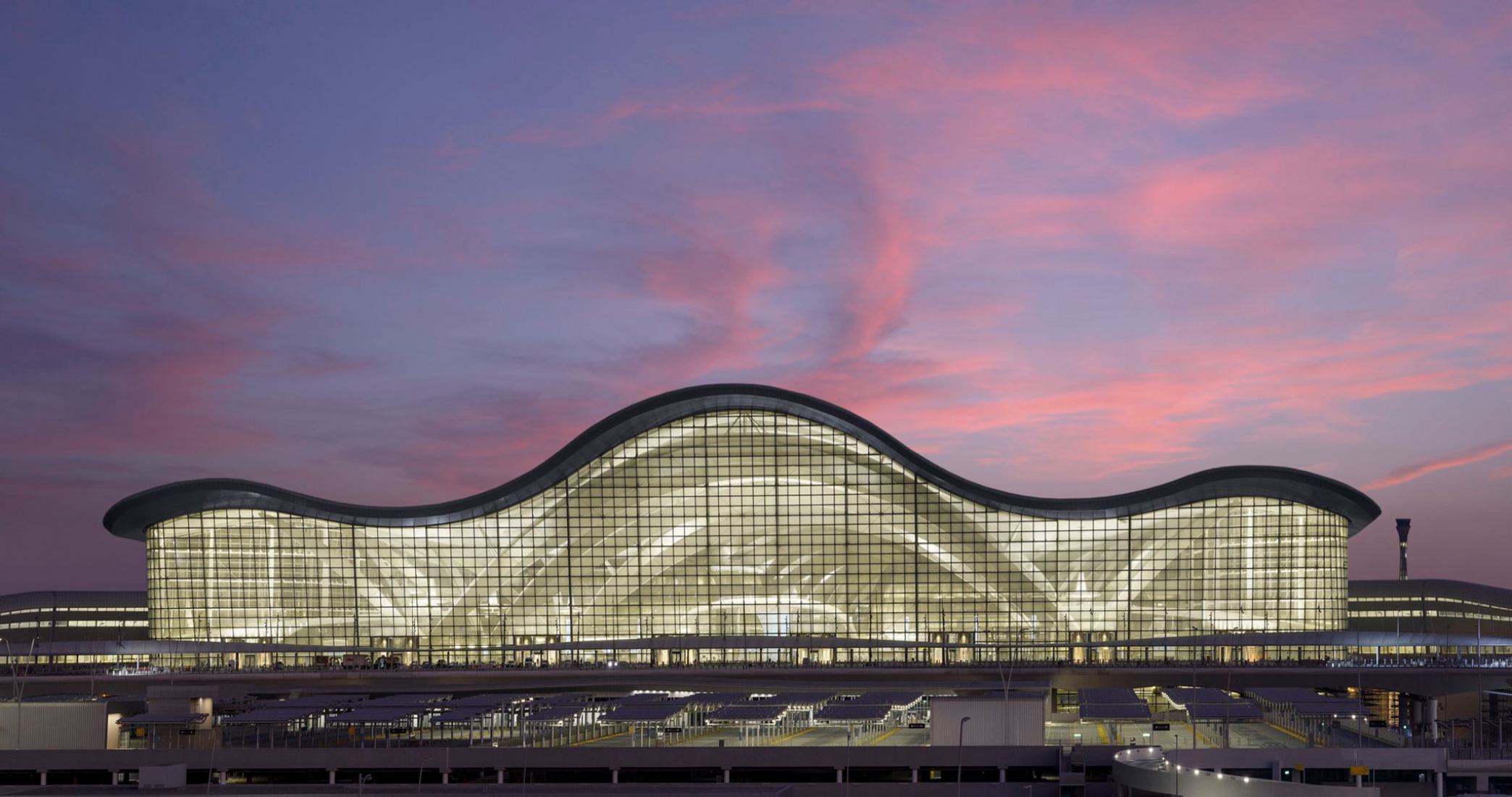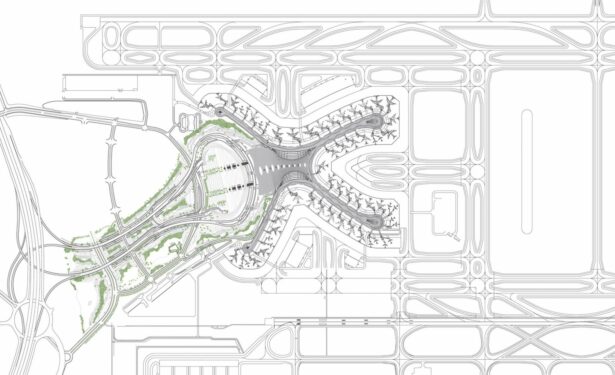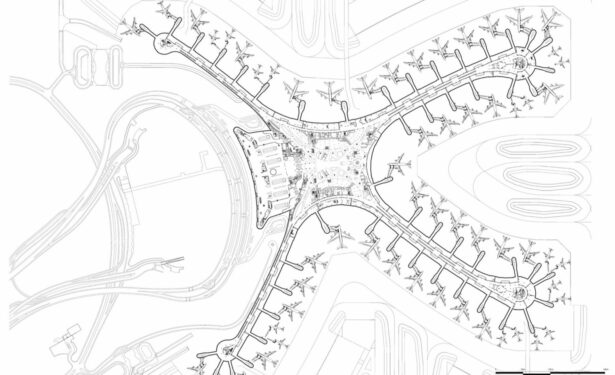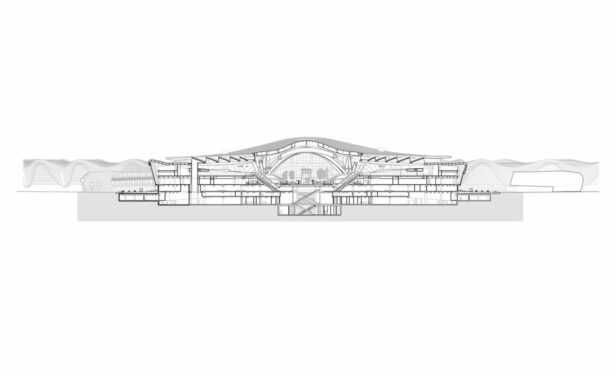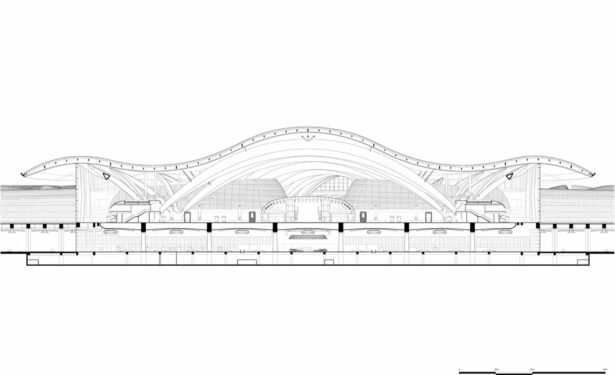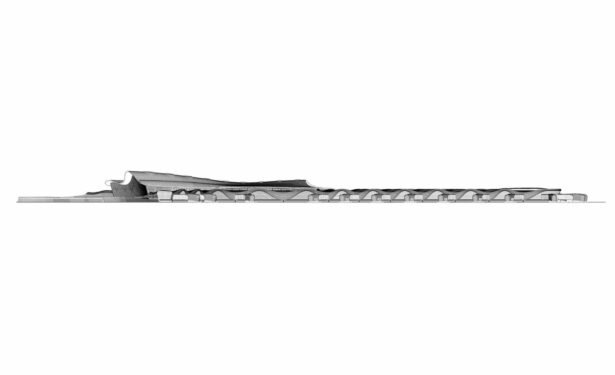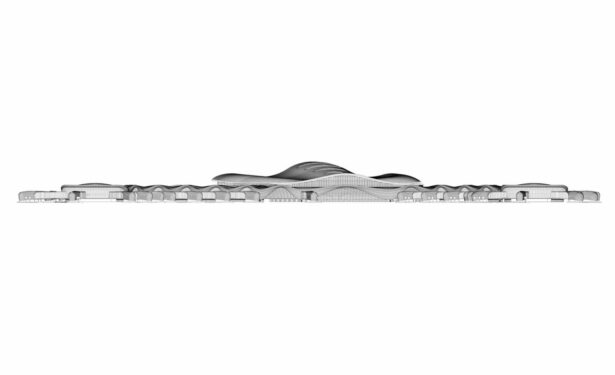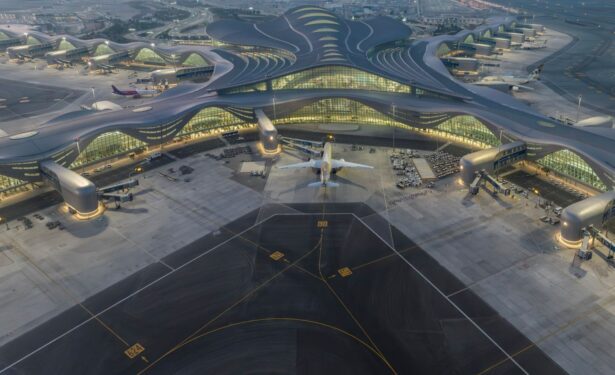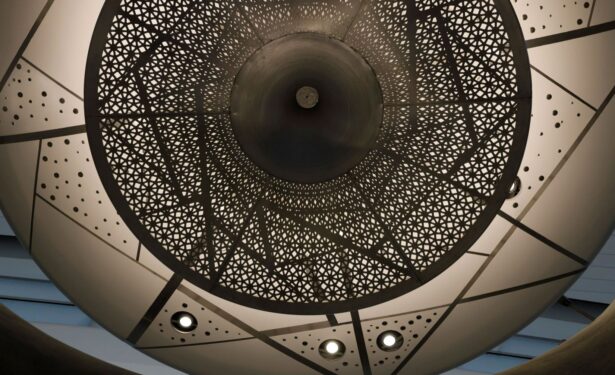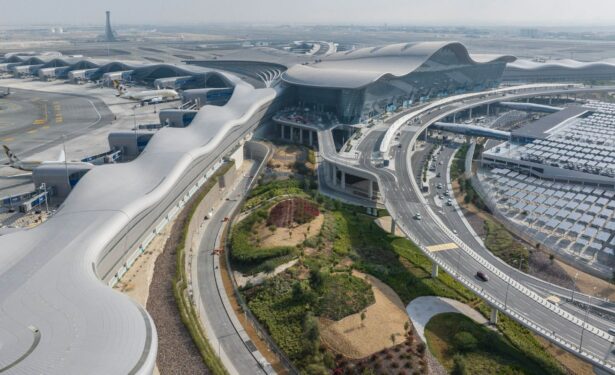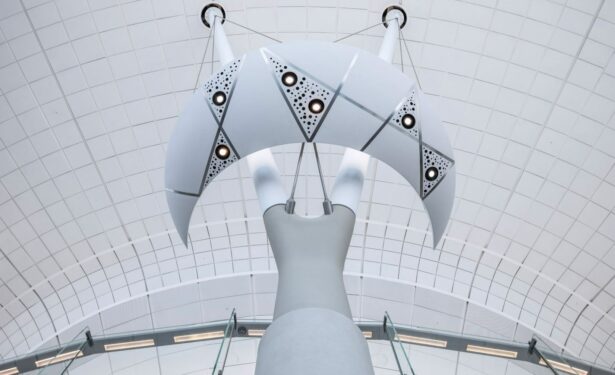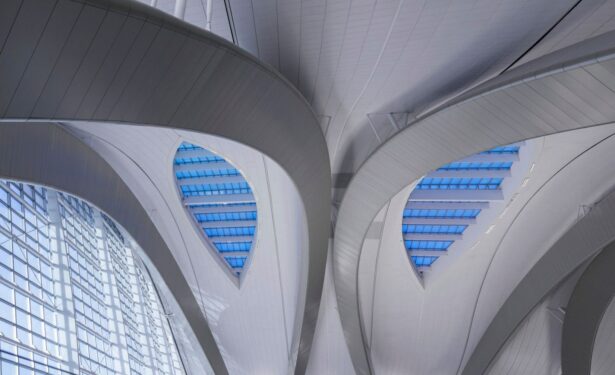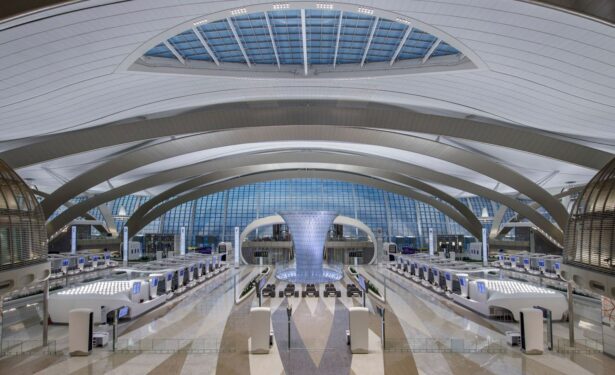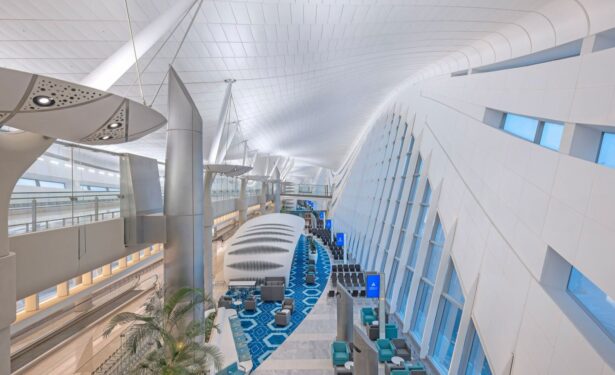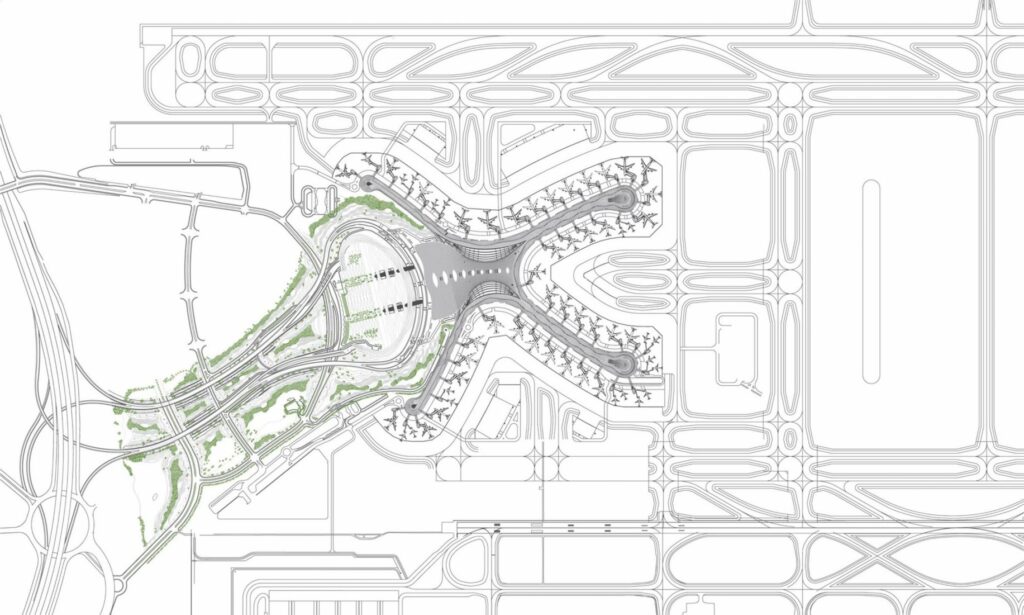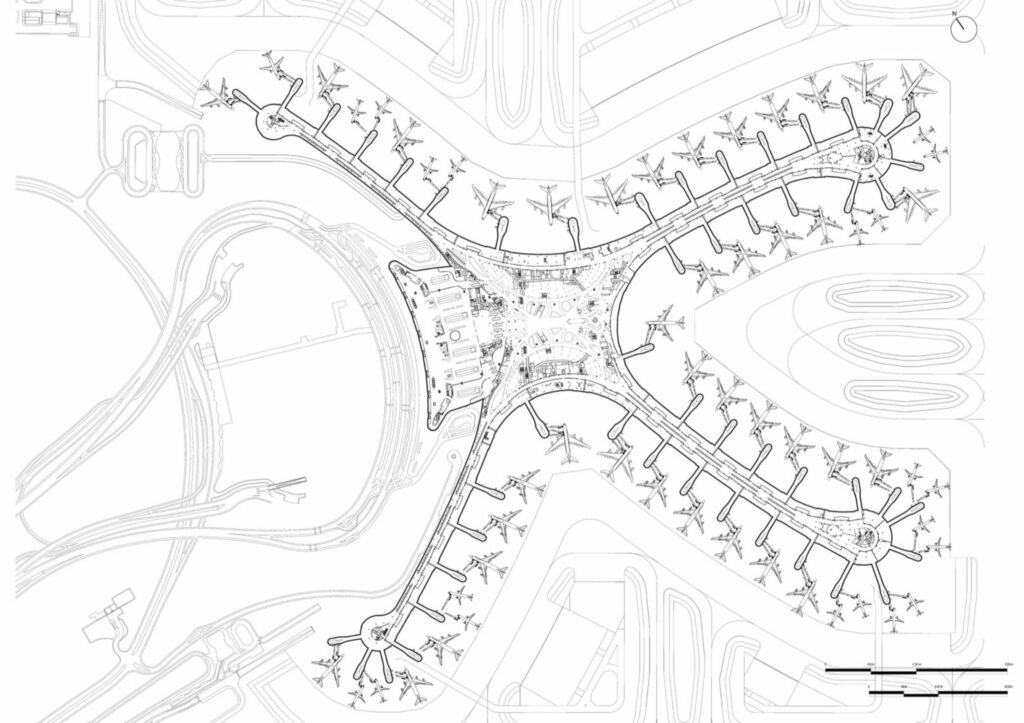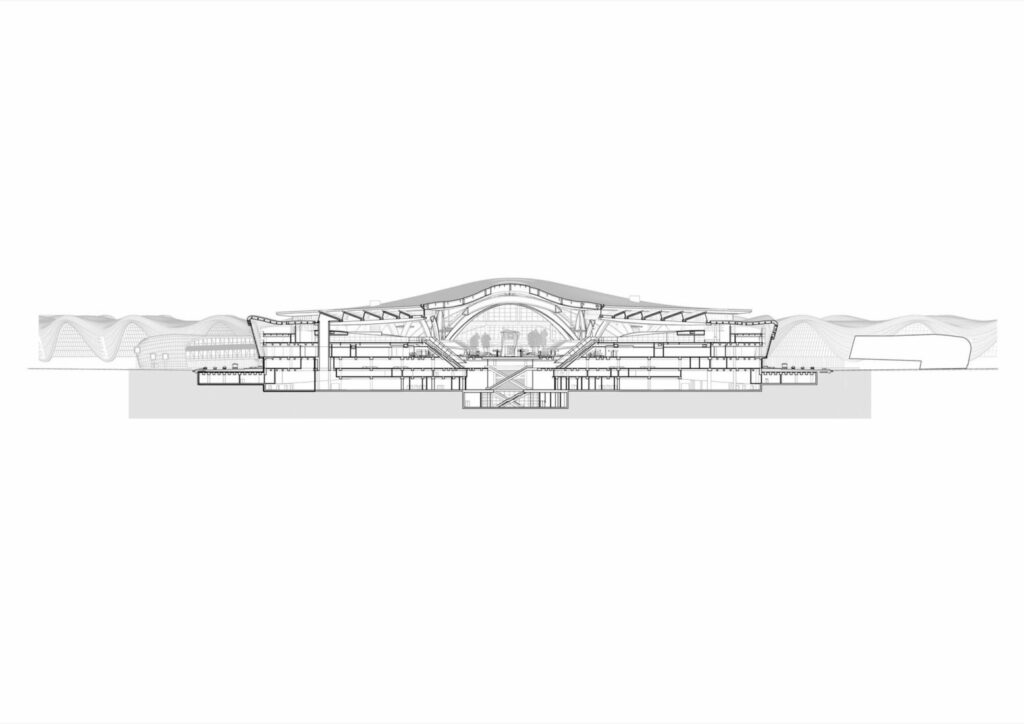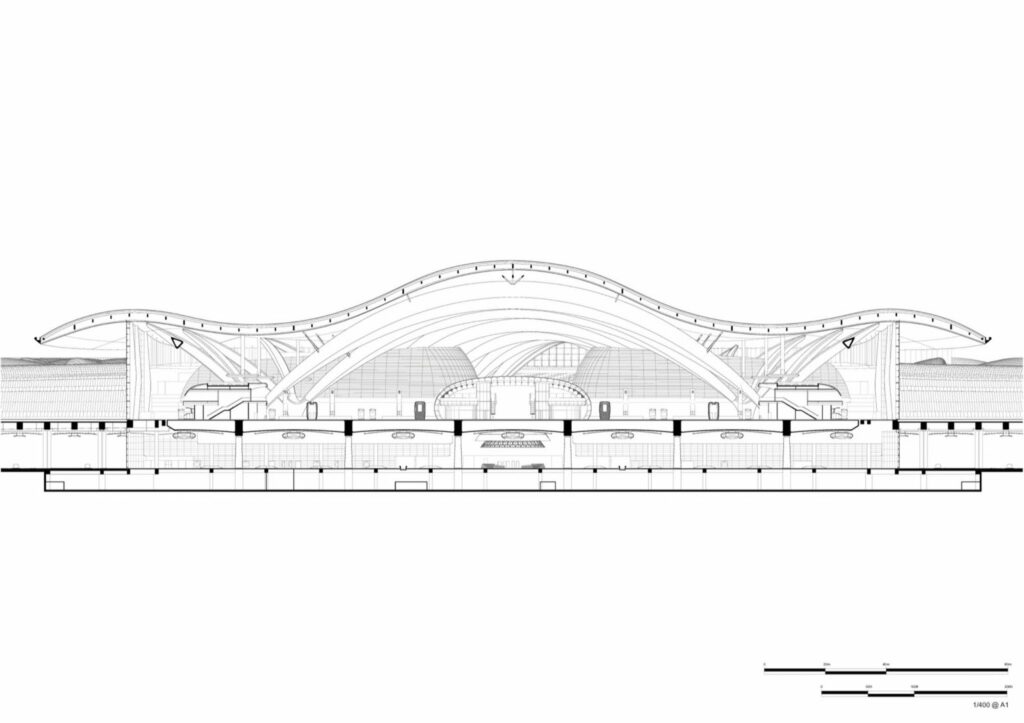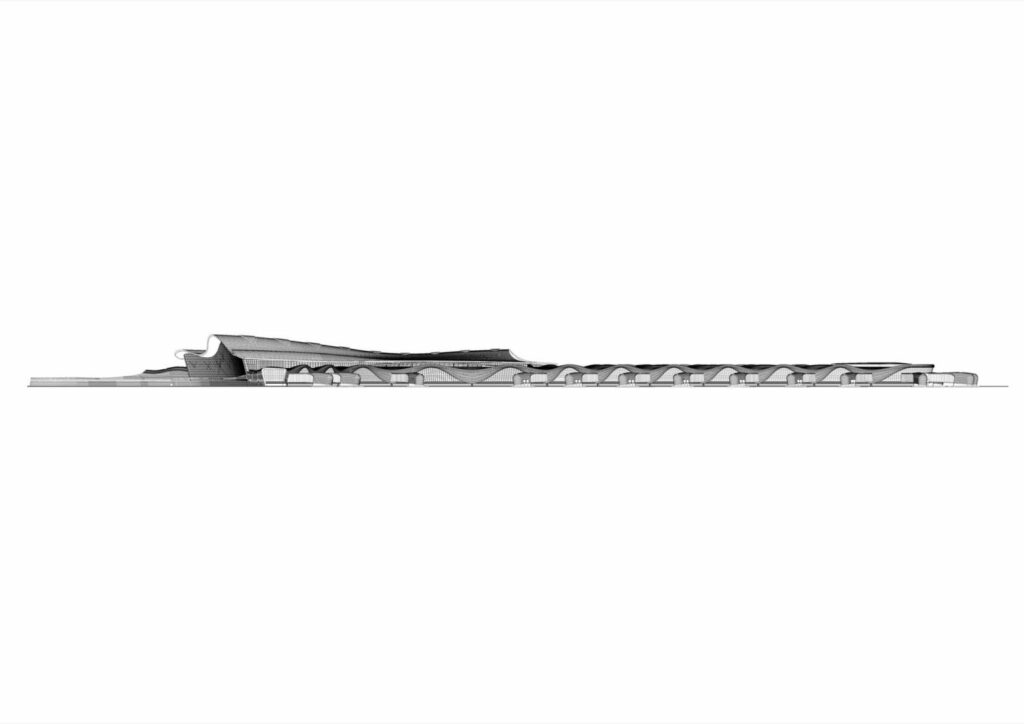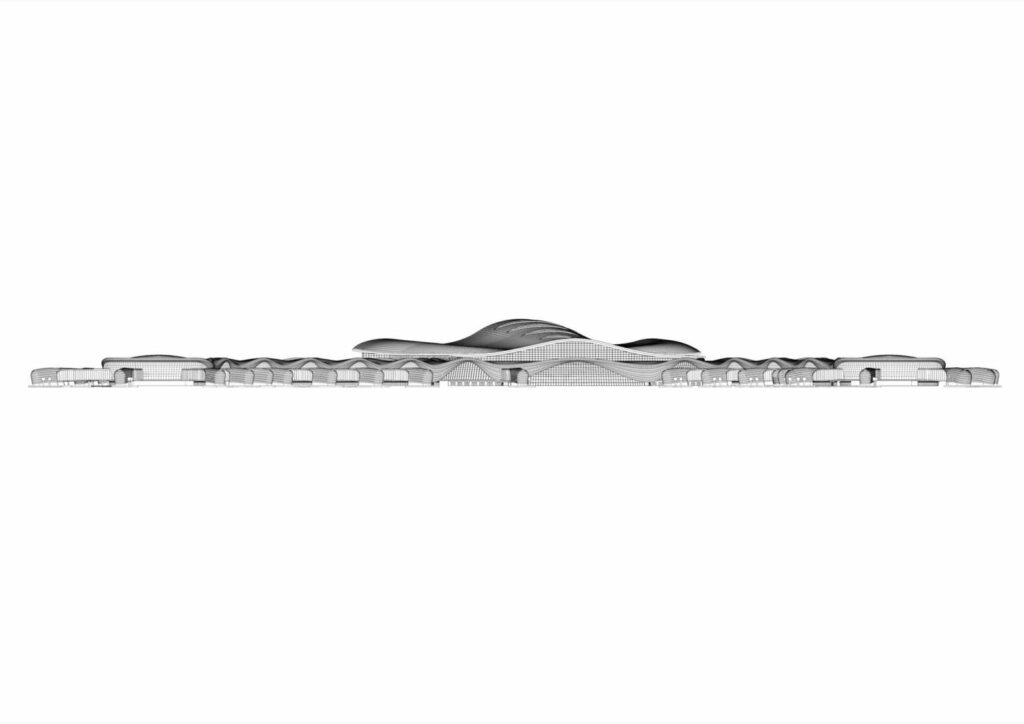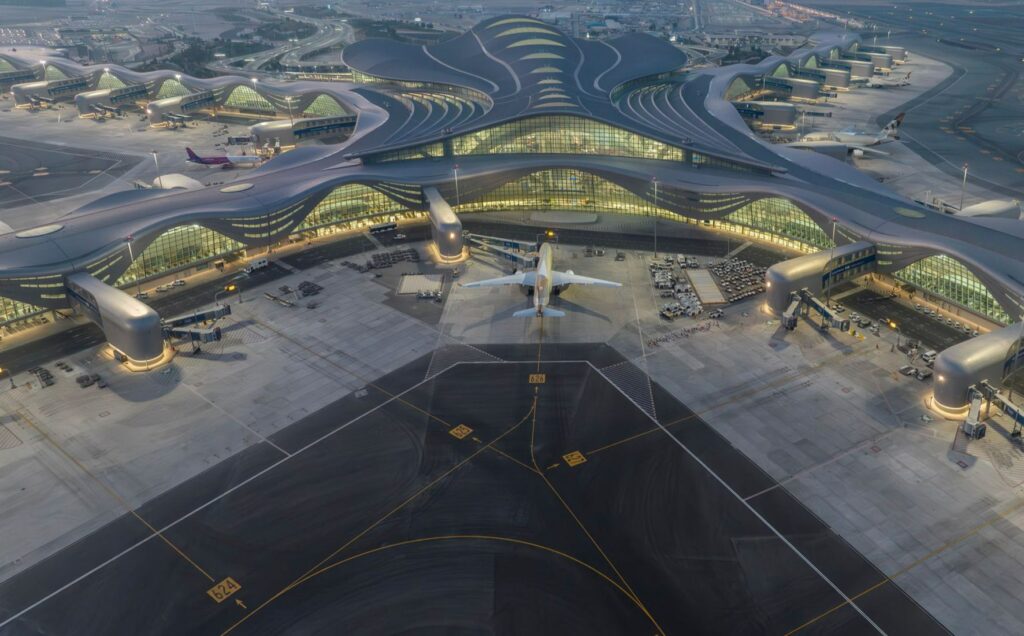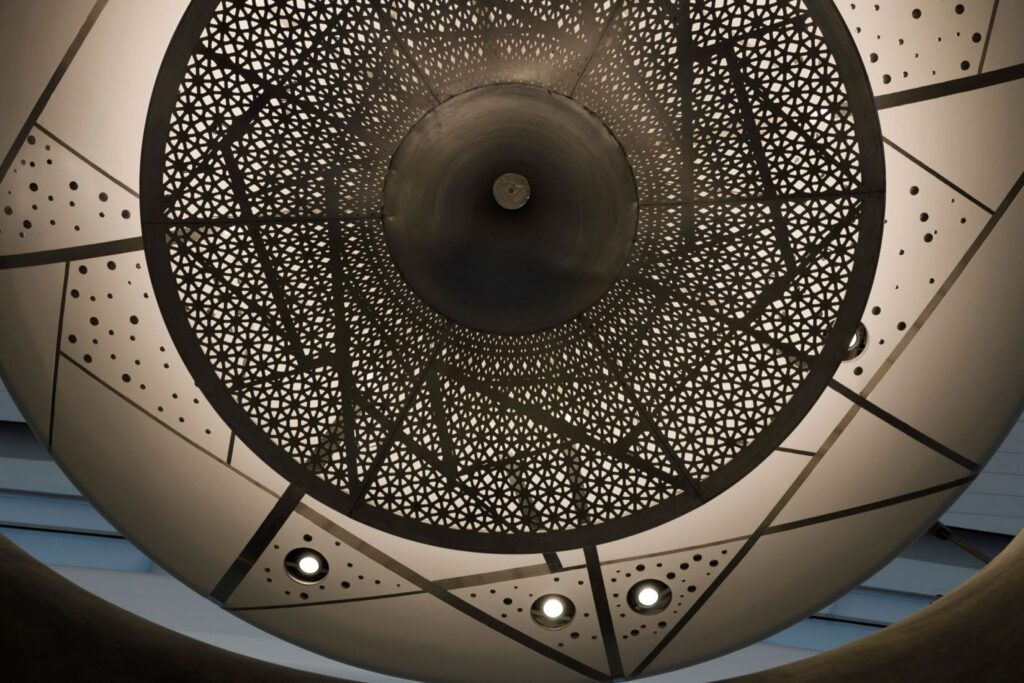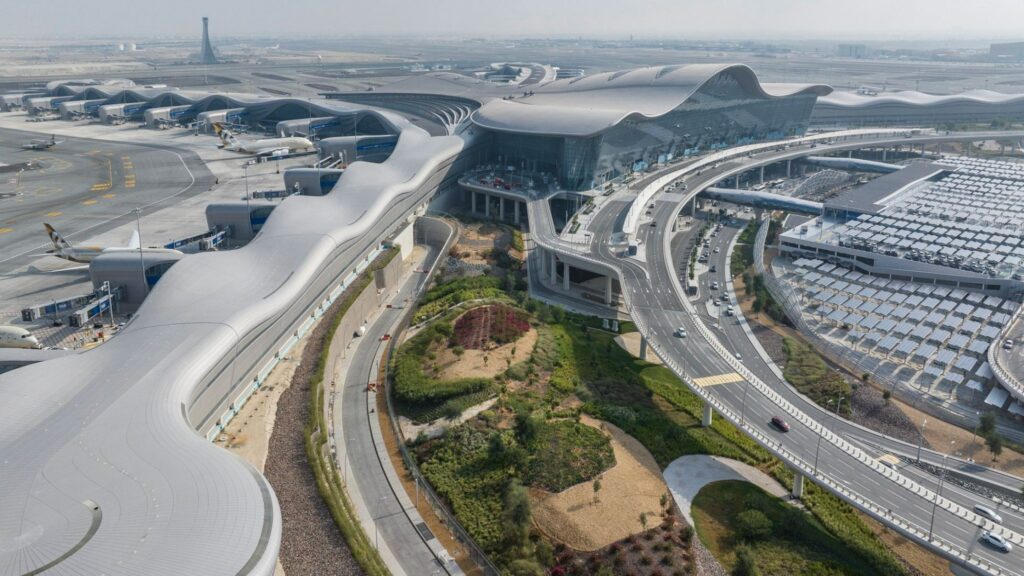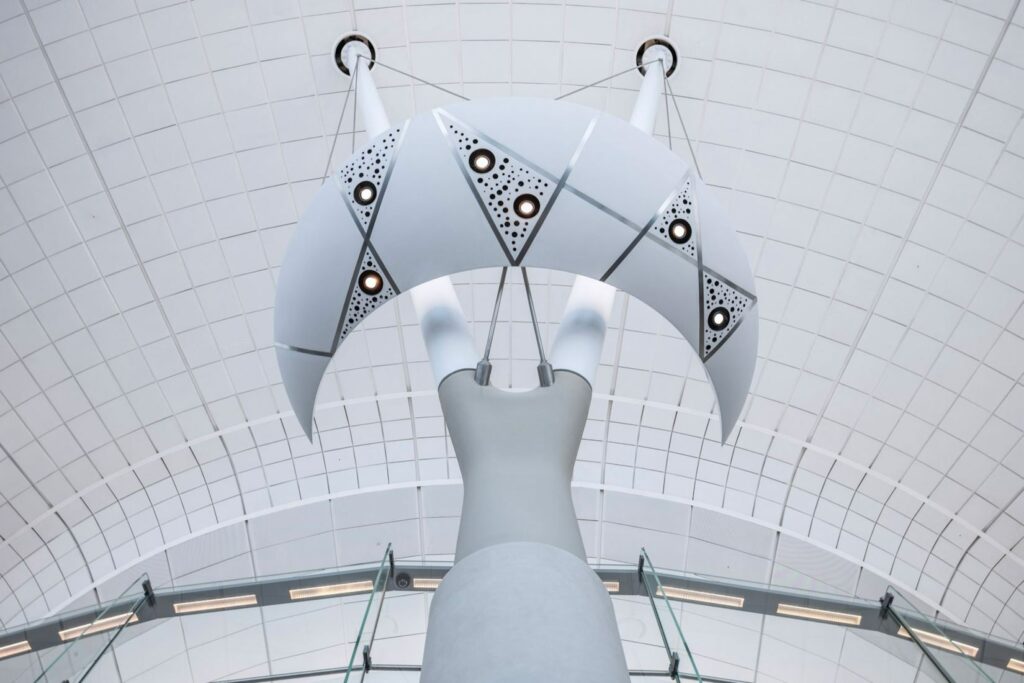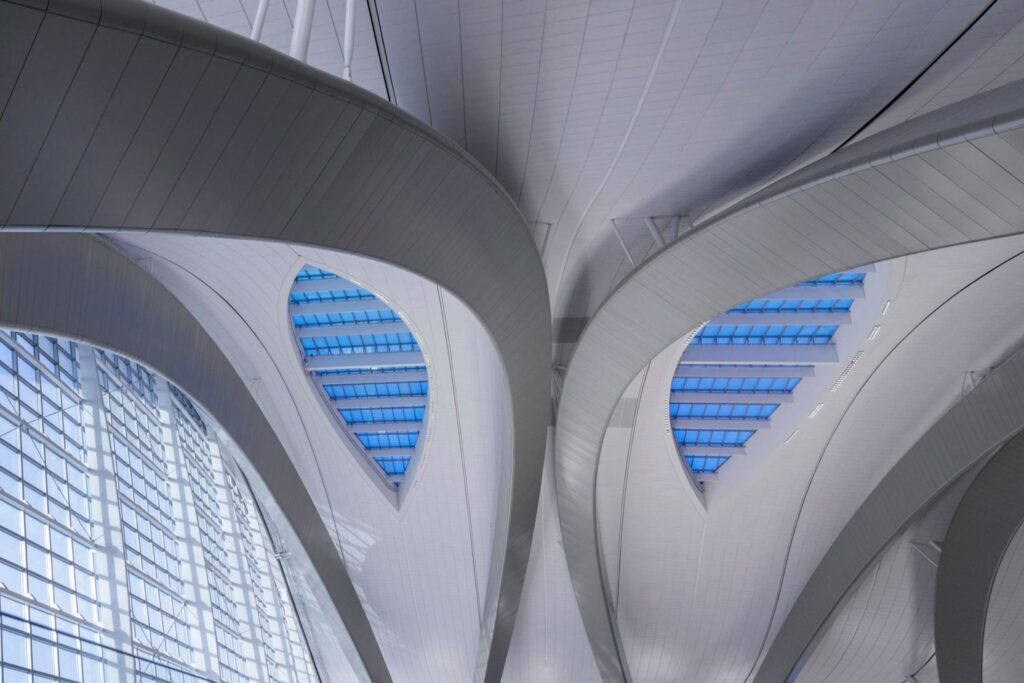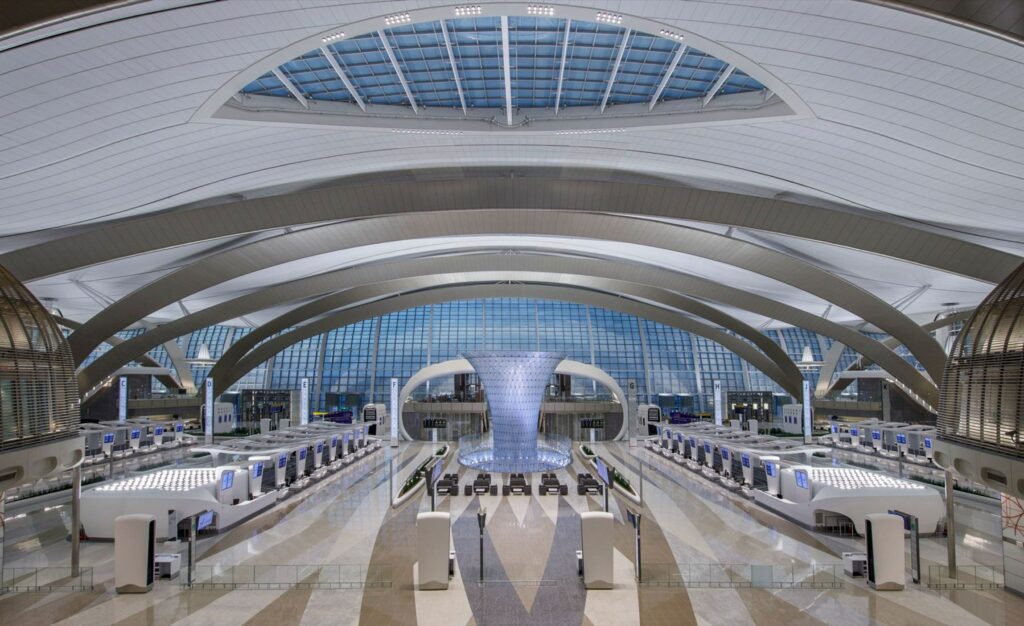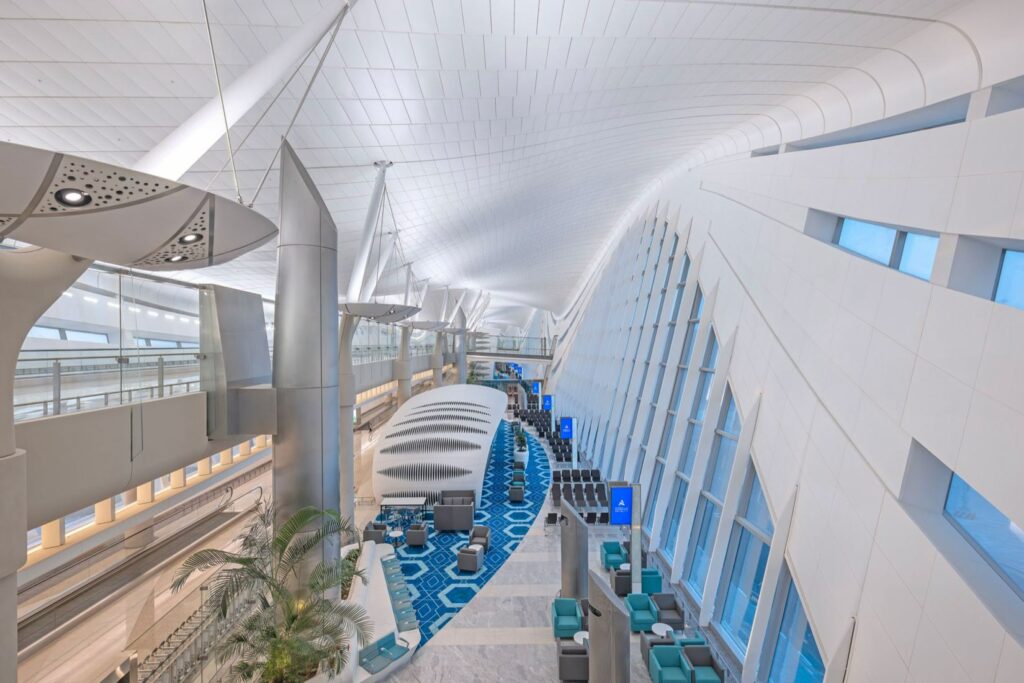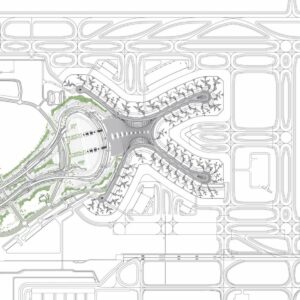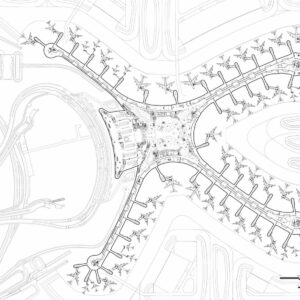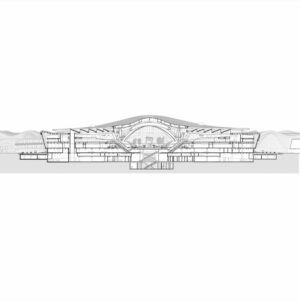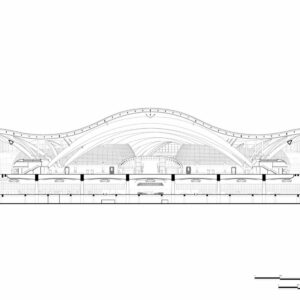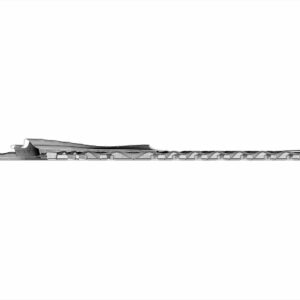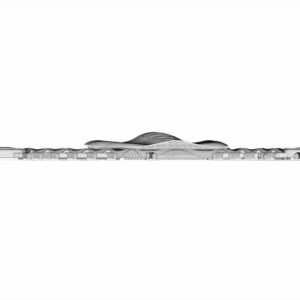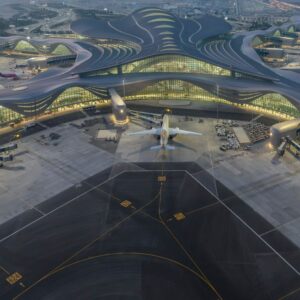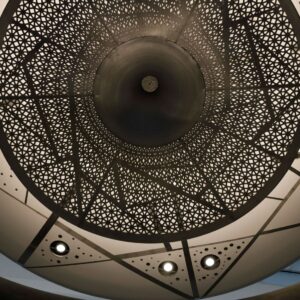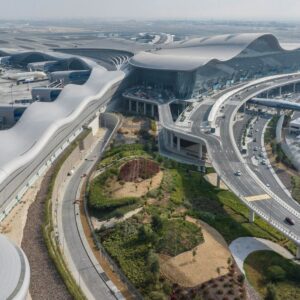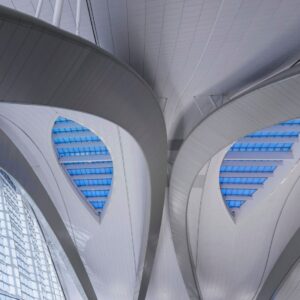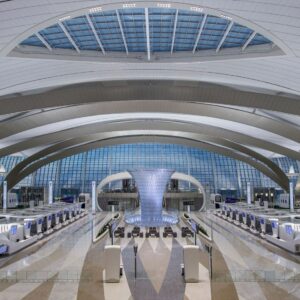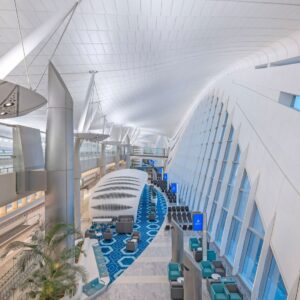- 9 August 2024
- 3239 defa okundu.
KPF Celebrates the Official Re-Naming of Abu Dhabi International to Zayed International Airport, Terminal A
Entirely designed by Kohn Pedersen Fox – from airside to landside, building to furniture – the state-of- the-art complex will serve up to 45 million passengers annually, doubling the airport’s capacity, and provide an inspiring new gateway to an increasingly interconnected world.
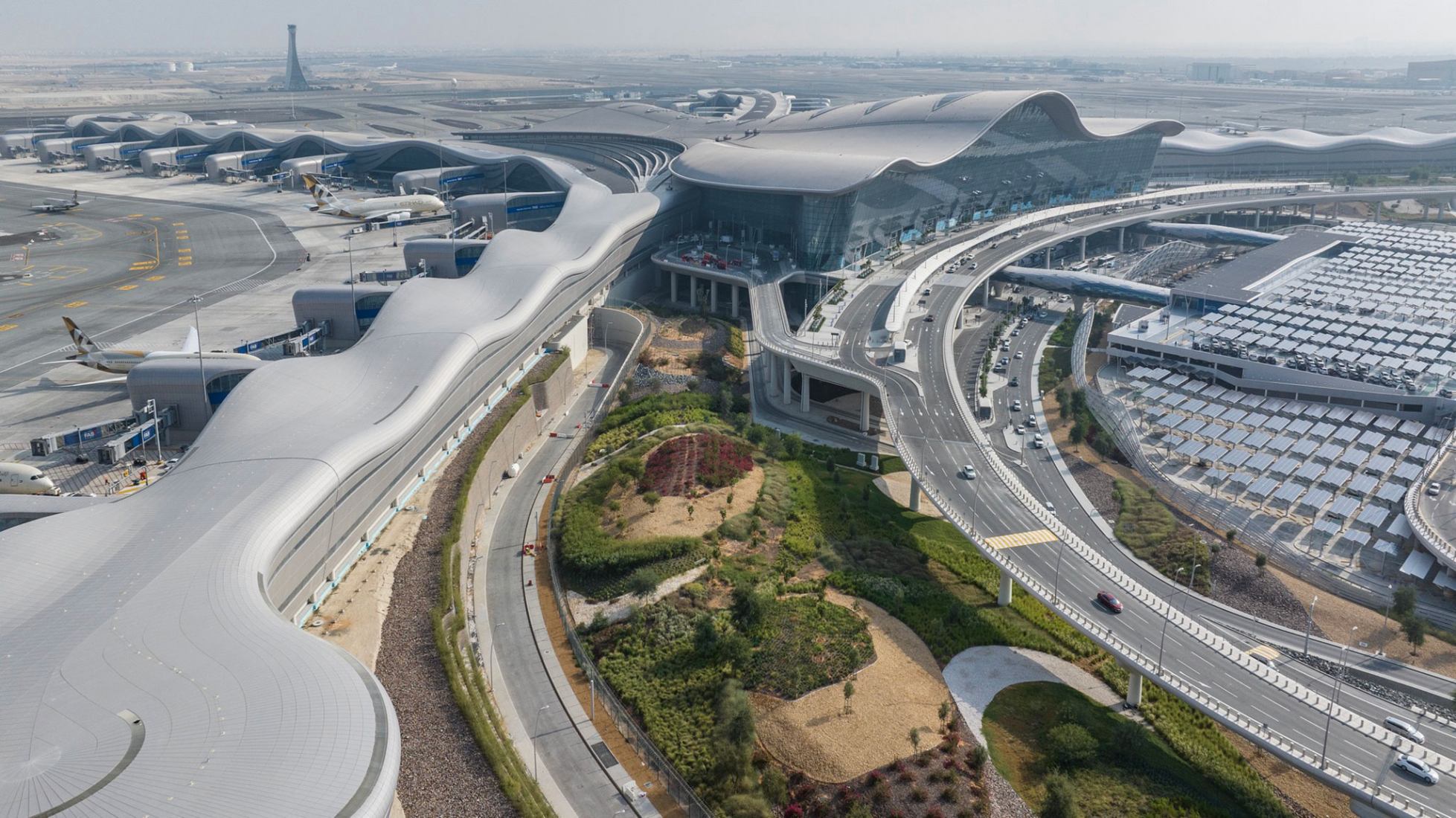
Informed by the undulating sand dunes of the desert and rich geometric patterns of Islamic heritage, Zayed International Airport’s new Terminal A is a civic landmark for the emirate and a gateway for the world, connecting East and West on a global scale.
Formally Abu Dhabi International Airport, it is now called Zayed International Airport, Terminal A – following directions of the President of the United Arab Emirates, His Highness Sheikh Mohamed Bin Zayed Al Nahyan, at the end last year.
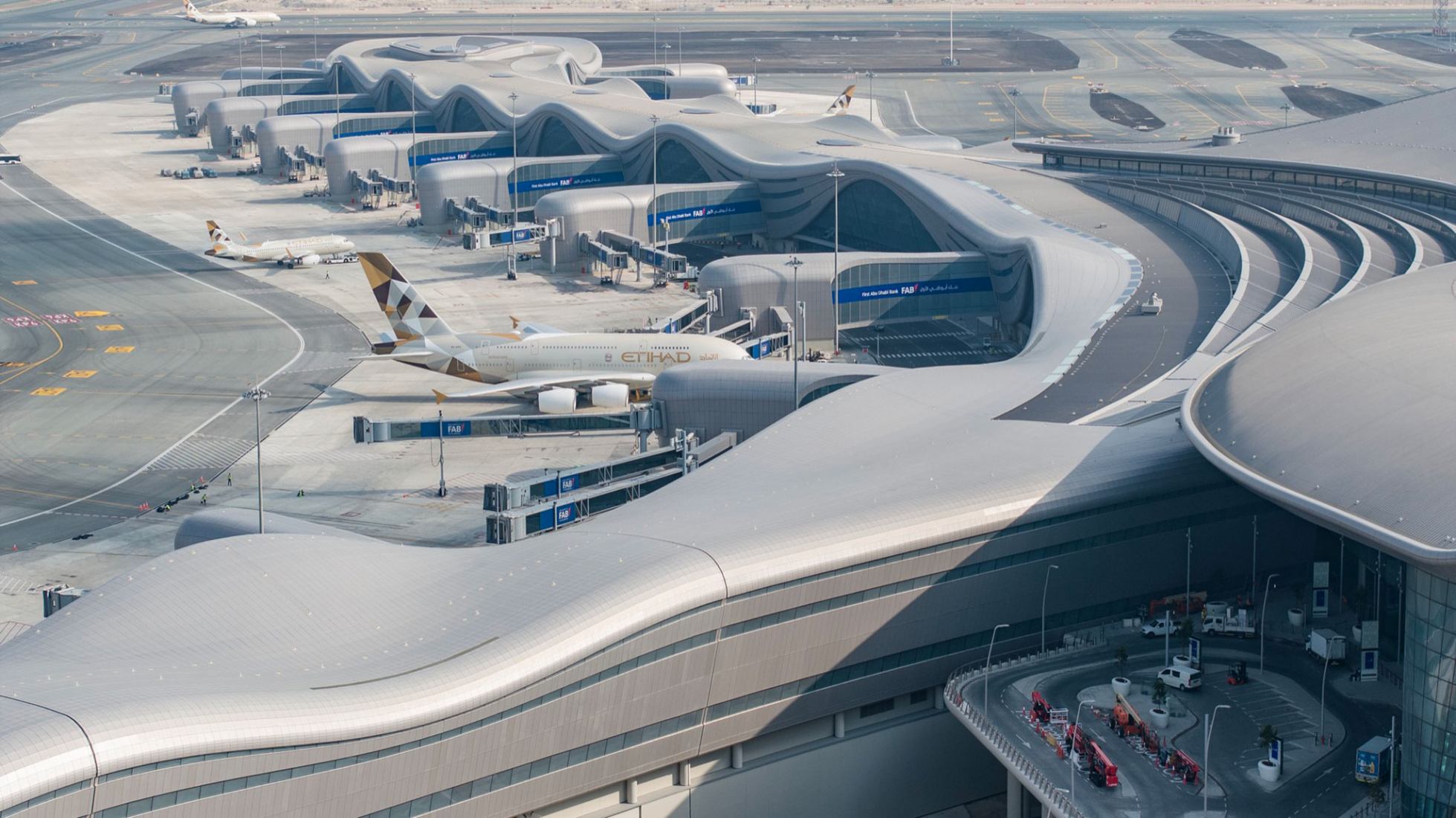
The airport’s design was conceived and executed entirely by Kohn Pedersen Fox (KPF) to deliver an unrivalled travel experience.
As one of the world’s largest airport terminals, it will process up to 45 million passengers per year—more than doubling the airport’s current capacity.
The terminal is raised above the road level, as if on its own plateau, with its illuminated interior providing a striking presence on the horizon.
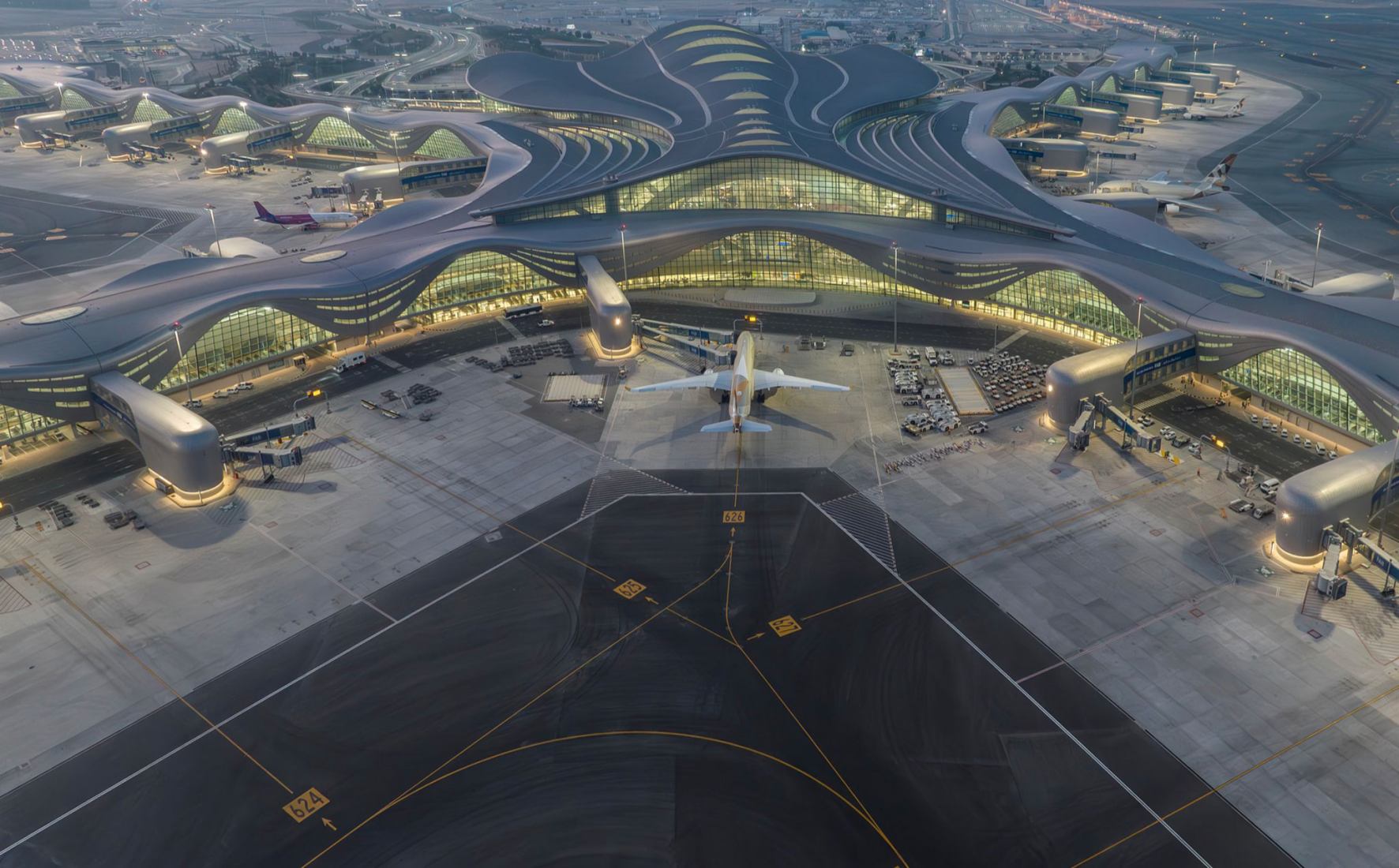
The building is instantly recognisable to drivers on the Dubai-Abu Dhabi highway, which links the UAE’s two largest cities.
On the approach to the terminal, the integrated system of roads and landscape leads passengers to the imposing, 50-metre-tall, free-standing glazed façade and monumental space inside.
The scale of the Departure Hall—a 50-metre-high, largely column-free space—endows the building with an open, outdoor quality, further enhanced by atmospheric lighting.
The supporting arches are visually separated from the roof, making the ceiling feel almost weightless. Two four-storey buildings are contained under the central roof and house a 138-room hotel and offices.
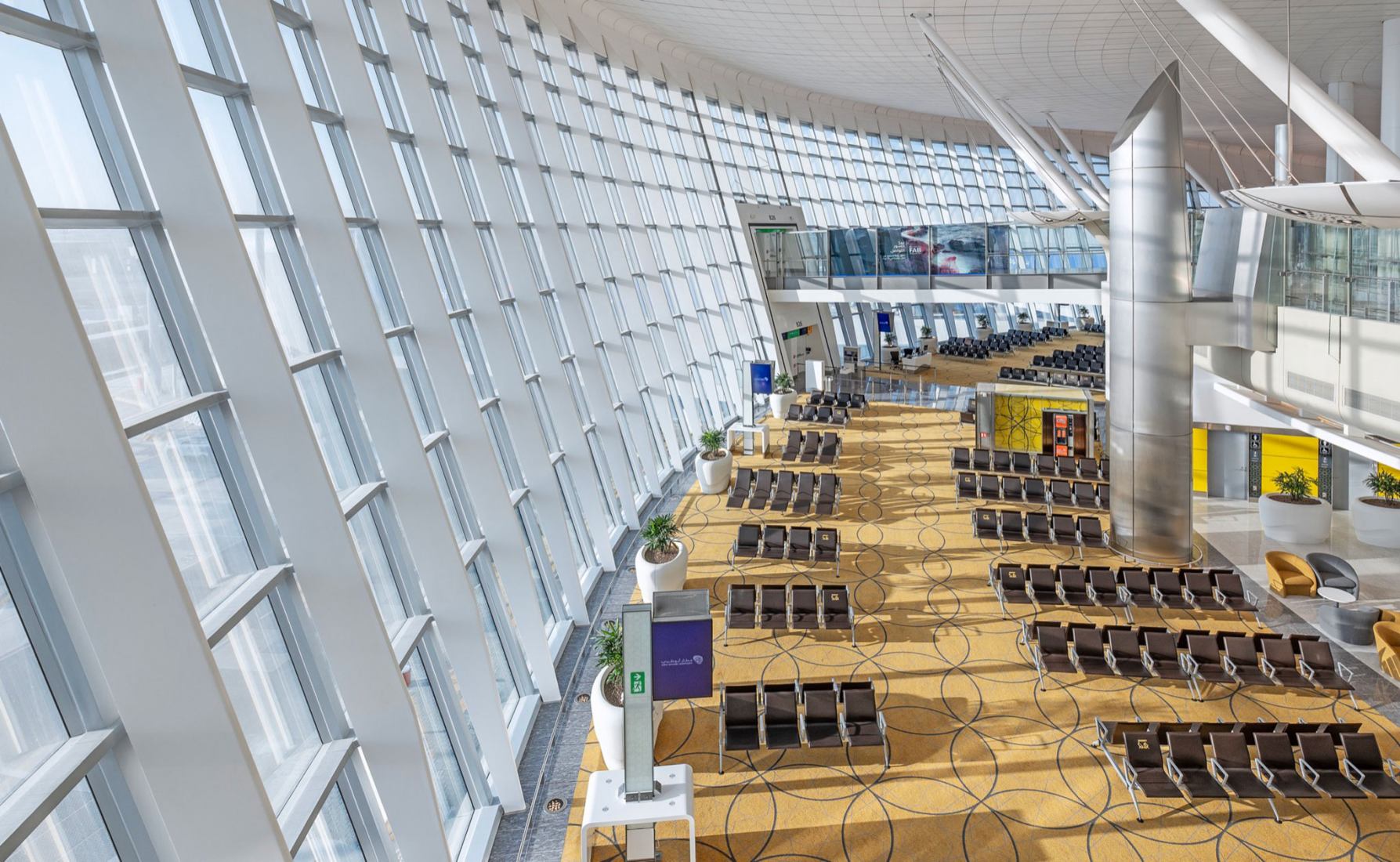
A key challenge in the envelope design was to provide ample daylight whilst protecting passengers against glare and overheating.
This balance was achieved without the use of external shading devices, which could be affected by sand accumulation.
Rather, by purposefully undulating the form of the roof and draping it over the façade, the amount of glazing along the piers was cut in half, while inclining the façade further reduces the impact of the desert sun.
High-performance glass, with fritting in a graduated pattern, was used where glazing was required to control glare.
To balance the terminal’s monumental scale, KPF created a series of landmarks, including the Sana Al Nour, the Feature Staircase, and the sculptural Shell, to orient passengers and provide moments of interest along their journey.
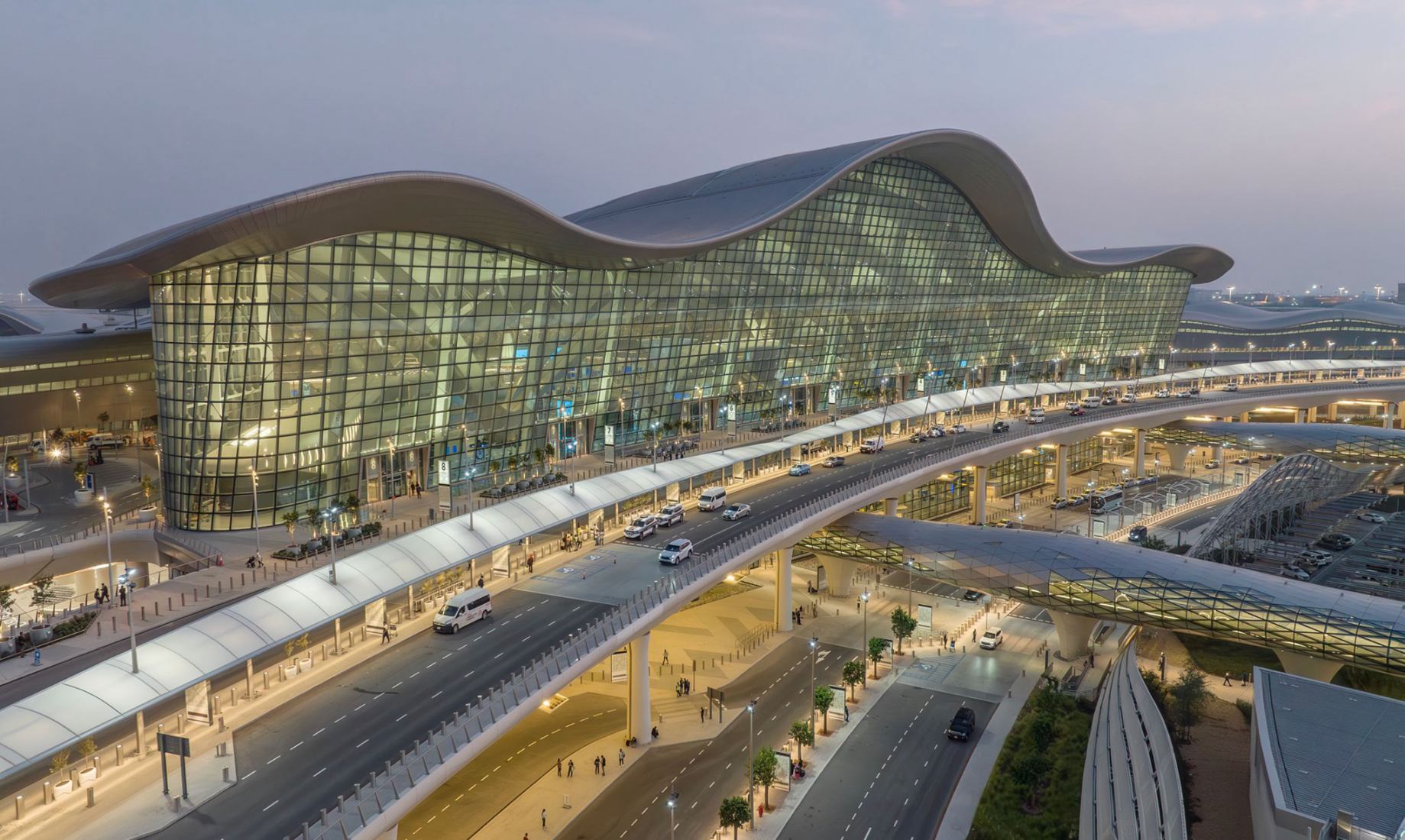
Sana Al Nour
Inspired by traditional Islamic architecture, Sana Al Nour was designed by Carpenter | Lowings in collaboration with KPF and the wider design team to direct light and air from the Departures to the Arrivals Hall.
One of the largest indoor public art features in the Middle East, it is 22 metres tall by 30 metres wide and features 1,632 individual curved leaves of translucent glass.
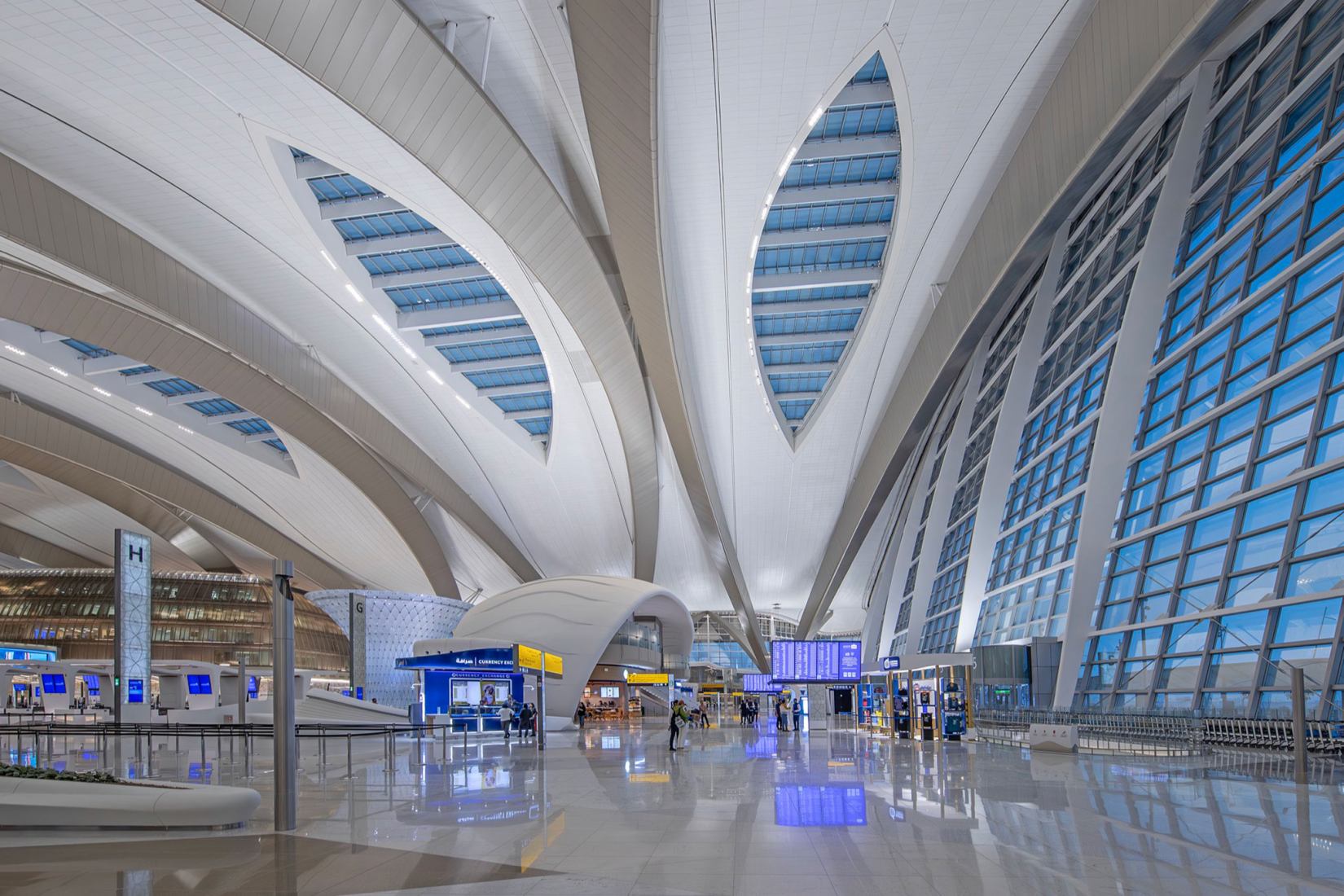
Feature Staircase
Often airports prioritise the departure experience.
At Terminal A, the arrival sequence is elevated in the building to provide dramatic views over the central space.
Linking the arrival corridor with the Arrivals Hall, the feature staircase is an exciting first step in one’s journey to Abu Dhabi.
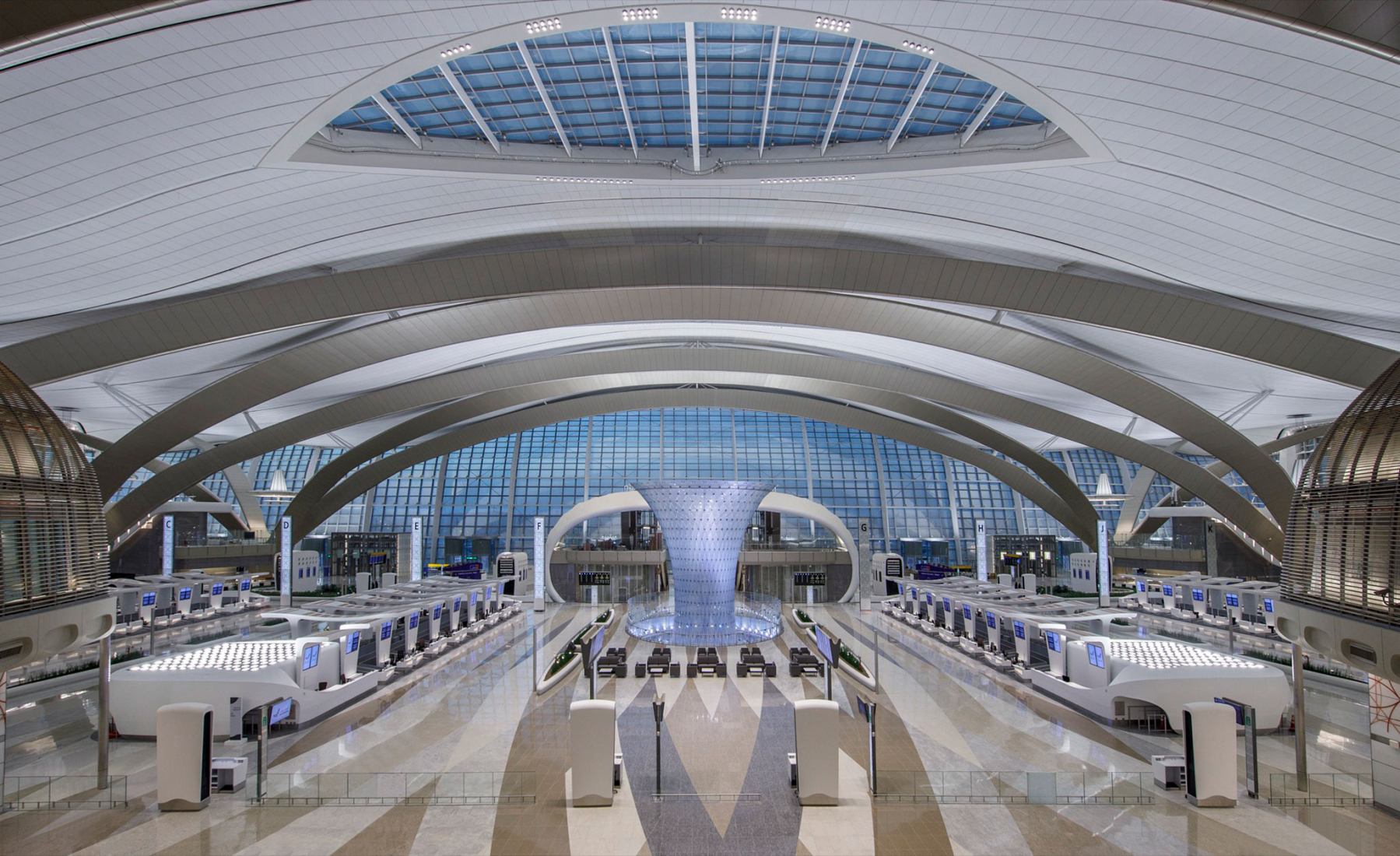
The Shell
Located at the end of the passengers’ journey, the Shell’s exterior is composed of glass with a fading frit pattern that becomes more transparent as it rises and picks up colours from the lighting.
Inside the glass, a three-dimensional sculpture references the wayfinding patterns that occur throughout the terminal.
This element combines polished brass with Cor-Ten steel, generating visual interest through an interplay of smooth and rough surfaces.
From here, a spiral stair with concrete treads, suspended within a curved glass enclosure, leads to the floor below.
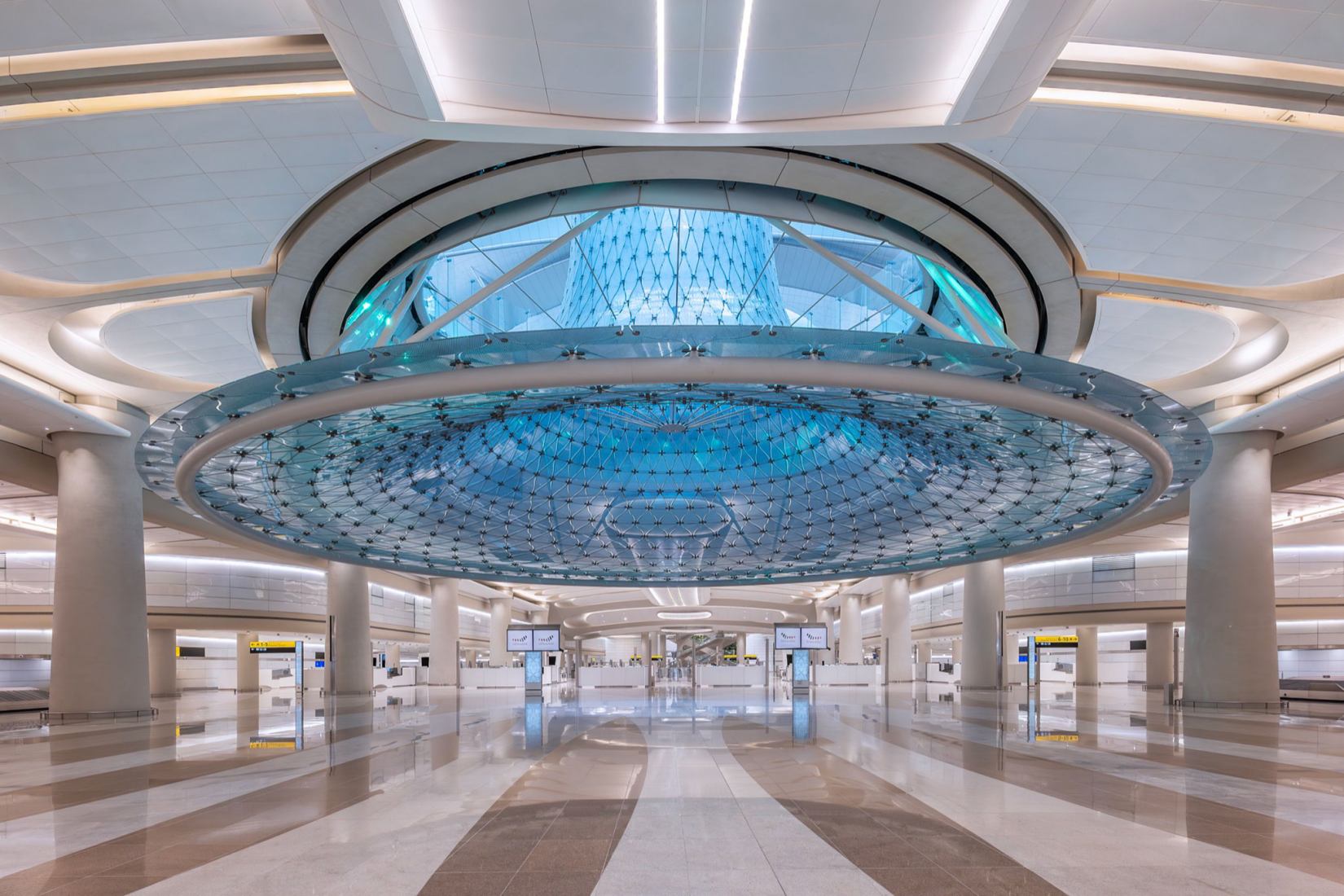
Creatively and meticulously planned, Terminal A boasts an average kerb-to-gate walking time of only 12 minutes.
Terminals with pier-based layouts offer simpler organization and higher aircraft capacity, but often result in longer walking distances for passengers.
At Terminal A, the distance from front door to last gate, and between any two points, was carefully calibrated to encourage walking and avoid the need for an APM (automated people mover) system for the first phase.

Parametric geometry modelling was used extensively in the design process to optimise the X-shaped plan for operational efficiency and passenger flow.
To aid wayfinding, each pier of the X is themed, inspired by a different element of Abu Dhabi’s character: Desert, sea, city, and oasis.
As a major airport for international connections, an efficient transfer process was required.
The centralised baggage handling system has enabled the fastest transfer connection time of just 45 minutes, which is best in class.
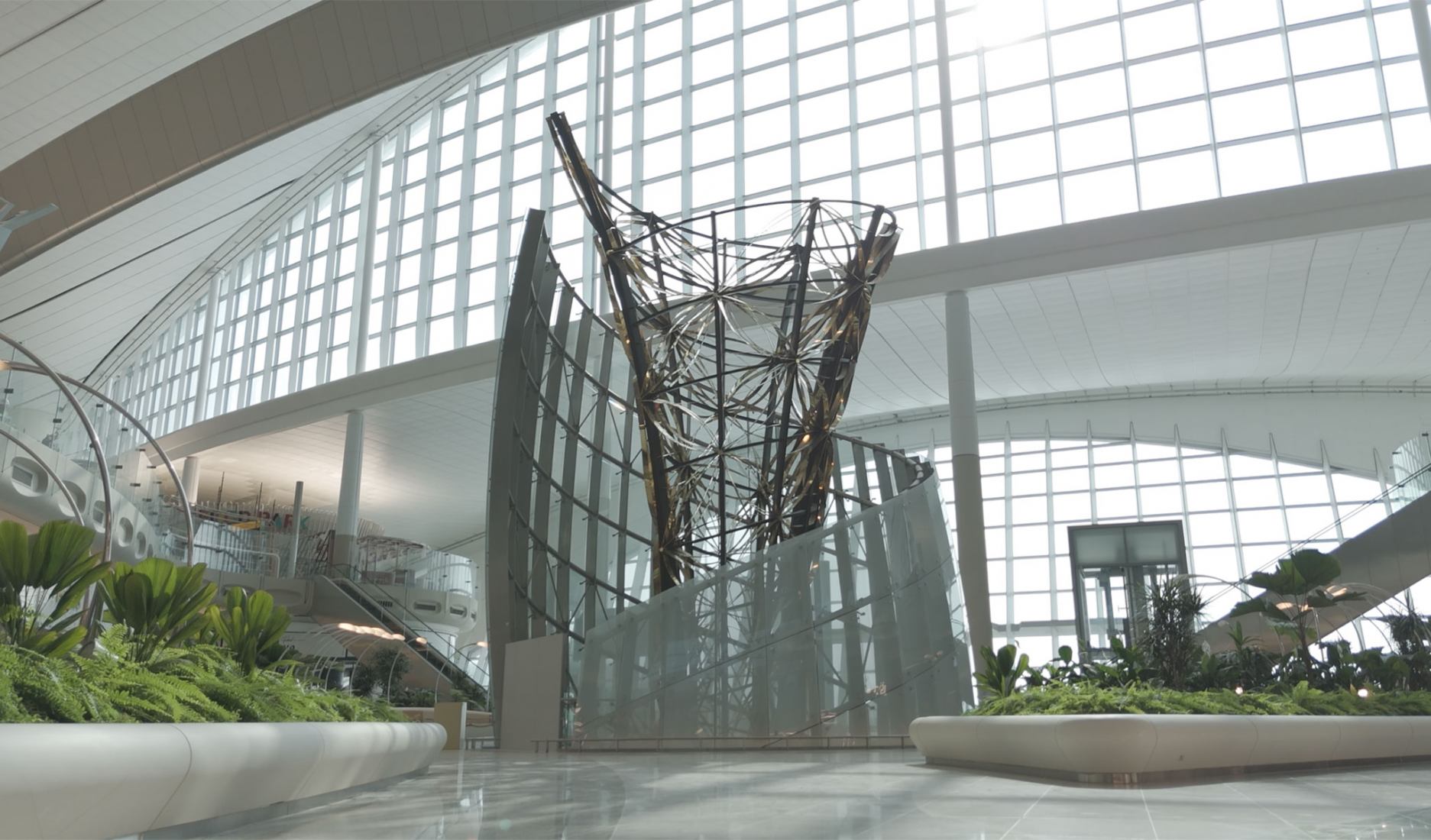
Terminal A will be the first terminal in the world to include all nine biometric airport touchpoints (see infographic in images).
In the first phase, biometric solutions will be installed in key areas, such as self- service bag drops, immigration eGates, and boarding gates.
These and other cutting-edge technologies, including an advanced baggage handling system capable of processing up to 19,200 bags per hour, will make the Terminal A passenger journey one of the world’s most seamless and efficient.
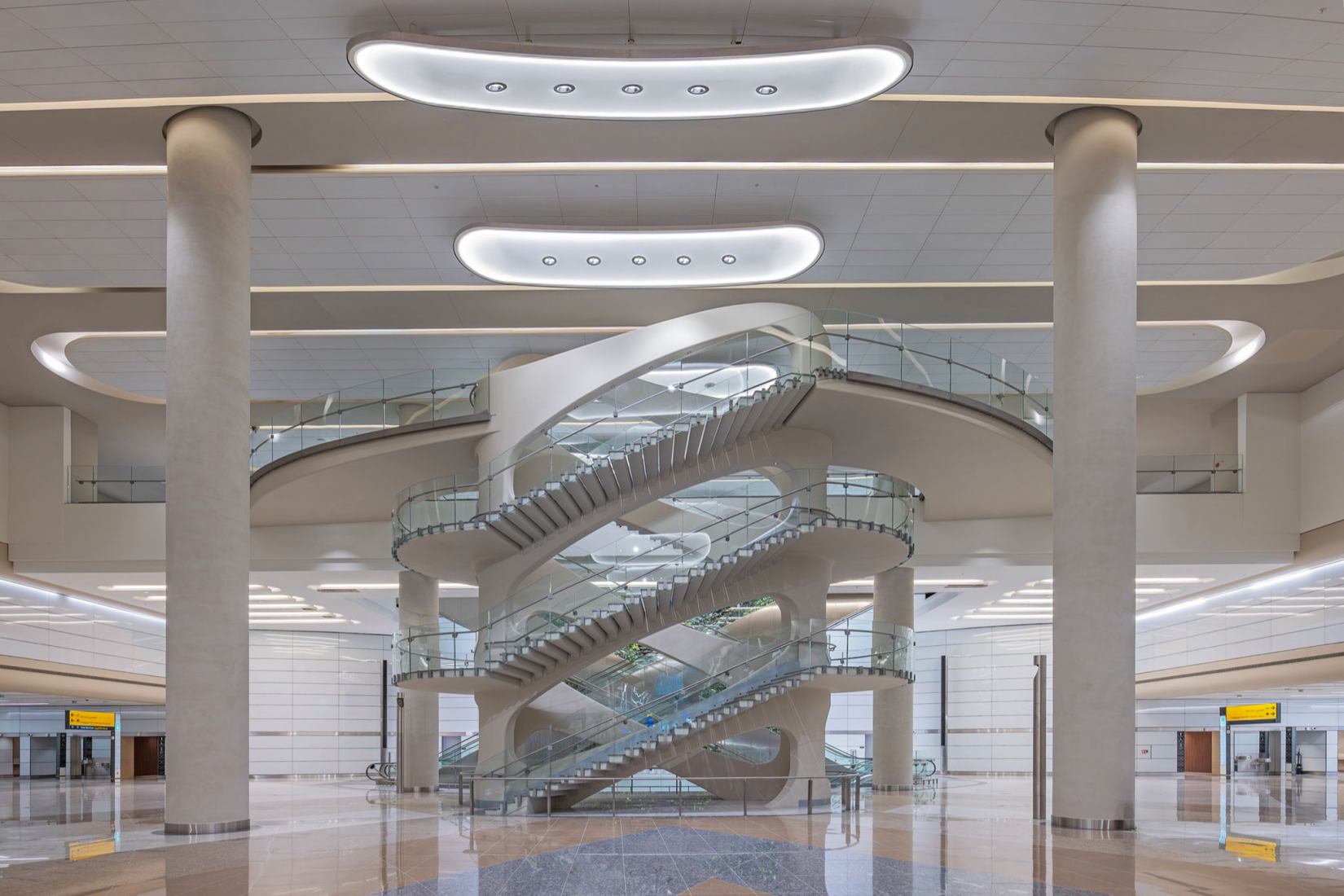
Appreciating that the nature and operation of air travel is everchanging, the terminal was designed to accommodate varied interior layouts by using large-span, structural arches as an alternative to the fixed column grid found in most modern terminals.
The one-roof terminal is 319 metres wide at its widest point, with the central roof, supported by a series of paired leaning arches, spanning up to 180 metres.
Elements below can be adjusted on an as-needed basis to accommodate changes in check-in, emigration, security, or otherwise.
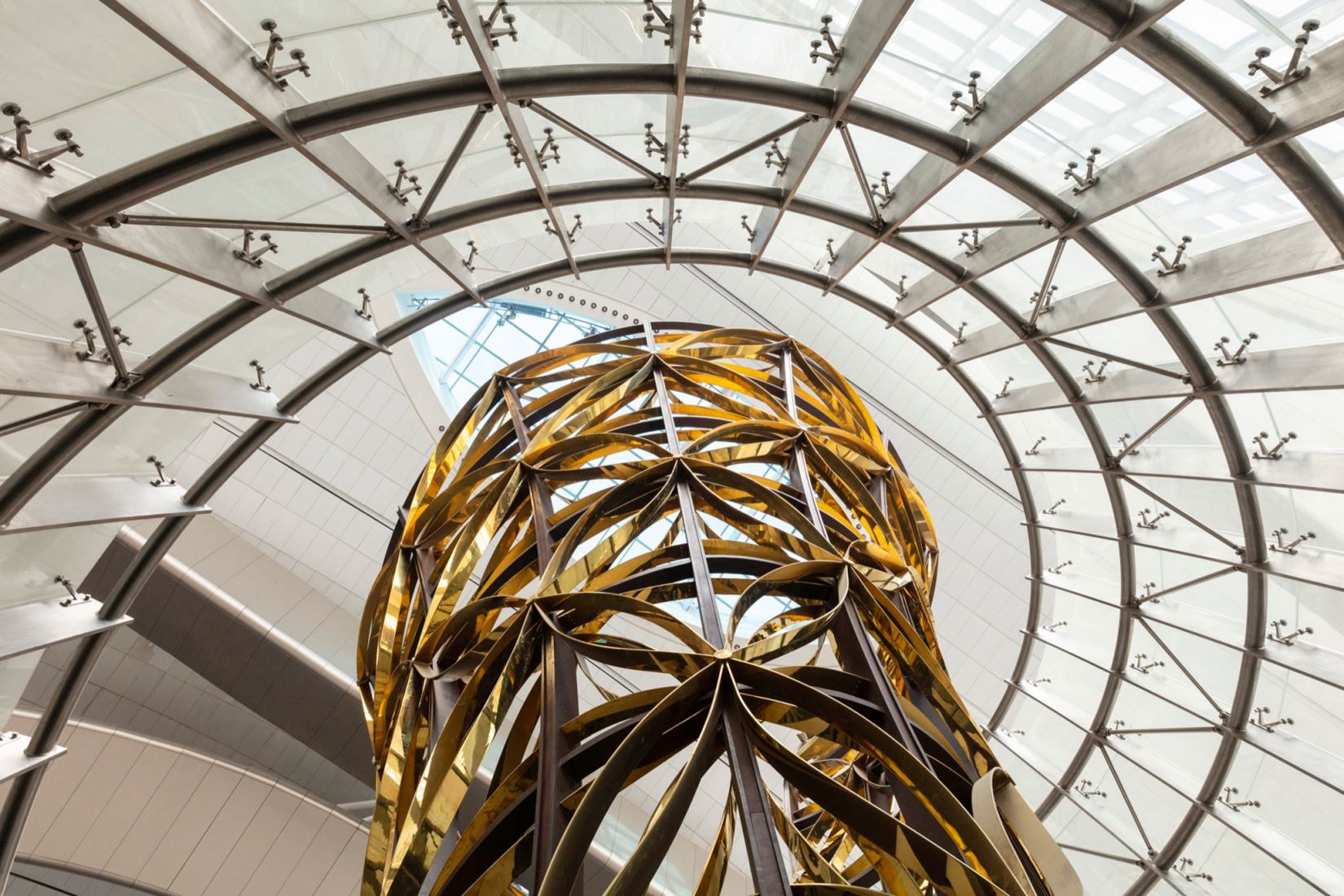
“Airport requirements are in a constant state of flux, as technology and security change. As designers we must address the need to adapt within the physical constraints of a terminal. At Terminal A, unprecedented flexibility is created by replacing columns with mega arches. The ideal form was researched using the latest technologies in modelling and structural engineering, to discover the optimum plan, spans, and layout. This solution produces some of the largest spans ever built in interior environments.”
